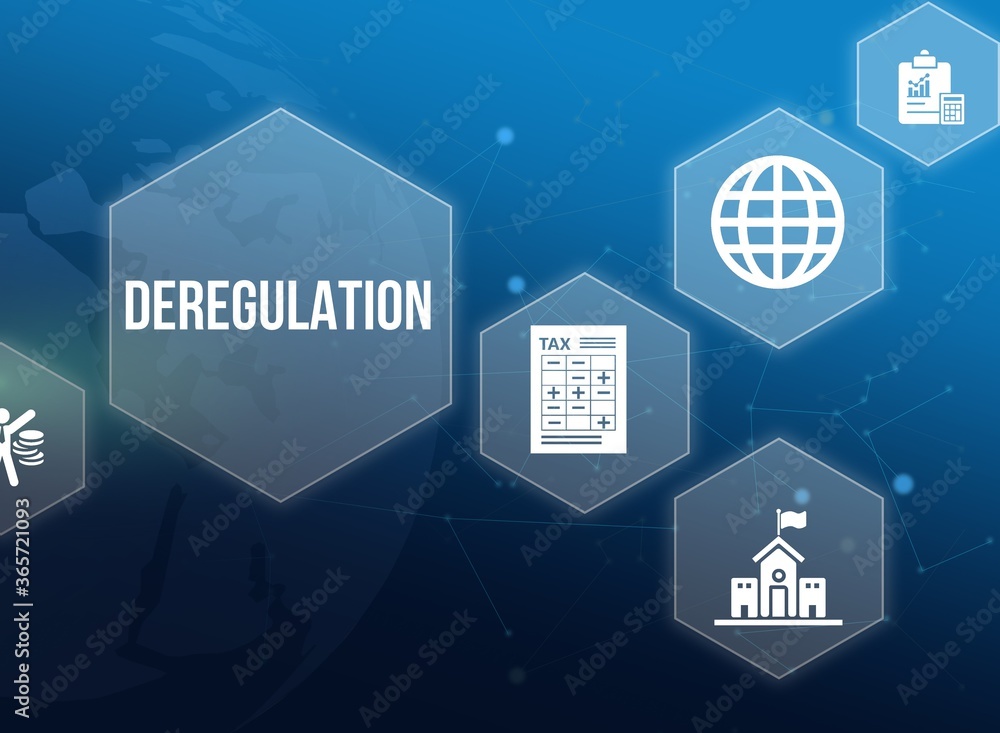The Dark Side of Financial Deregulation: Systemic Risk

Deregulation involves relaxing regulations within an industry to help lower costs, increase profits, and provide companies more freedom in how they operate.
But this can lead to financial catastrophe, with corporations forming monopolies and restricting transparency over how they treat consumers.
What is Systemic Risk?
Systemic risk refers to any threat posed to financial markets and economies by an array of interdependent factors that impact overall markets and economies; as opposed to market/price risk which only pertains to specific items being bought/sold.
Systemic risk is exemplified by the failure of Lehman Brothers. It occurs because institutions depend on each other – by the way, dominoes fall in this instance. Systems risks are more difficult to anticipate and manage as they are broad economic challenges rather than individual firm incidents.
Government interventions often create systemic risk. While governments need to respond swiftly to crises in order to preserve confidence, their interventions also sow seeds for future crises and should be understood so that policies don’t create unexpected, long-term ramifications. To manage systemic risk efficiently it’s crucial that individuals understand how the economic system functions so policies don’t create unintended effects that have unanticipated repercussions with far reaching effects.
What Caused the Financial Crisis?
There are multiple causes for the financial crisis, but deregulation allowing for riskier behaviour was among them. This deregulation resulted from the political pressure of financial industries on Congress and other government institutions to lower regulation.
At the root of this crisis is the use of complex financial products like mortgage-backed securities (MBS). MBS are pools of home loans sold as investments to investors as securities; their use allowed lenders to extend mortgages to borrowers with poor credit more easily and then sell those mortgages as investments.
Crisis was caused by a sudden reduction of liquidity in financial markets, spurred on by a collapse of the housing market and leading to global recession. Furthermore, it revealed major flaws in regulation and supervision, prompting Federal Reserve changes in their approach to supervision and regulation.
What Can We Do to Prevent a Crisis in the Future?
After the global financial crisis, it was natural and necessary for policymakers to explore ways of tightening regulation. A policy framework which ignores new research or evidence runs the risk of undermining resilience within financial markets and institutions.
But there are limits to the extent that government can modify a regulatory system without becoming overburdened and inhibiting economic growth, thus hampering their ability to avoid or mitigate recessionary periods when they come.
Gramm-Leach-Bliley Act allowed investment and commercial banks to merge, increasing leverage. This provided investment banks with the incentive to take greater risk and contributed to the recent credit bubble. New regulations can help prevent such problems by isolating risky activities from traditional banking intermediation; increasing capital requirements for systemically important institutions; and mandating higher liquidity standards. Redistributive policies could also increase social costs of risk taking while encouraging companies to share profits among workers.
Conclusions
Financial crises are large economic shocks that impact all markets at once. While individual companies or assets might experience risks due to singular events or assets, systemic risk refers to entire financial markets collapsing and leading to real economy downturn. Deregulating finance industries – as has happened in numerous countries in the last 30 years – is therefore particularly dangerous.
The recent global banking crisis provides a stark reminder of systemic risk. It was caused by interconnections among large banks that are so interdependent they were “too big to fail”, such that even one failure could spark runs on other firms and ultimately bring down both banking systems and wider economies.
Attaining systemic risk requires making sure larger banks do not become so interdependent that they pose a direct threat to the economy, while simultaneously strengthening capital requirements and conducting rigorous stress tests on them so as to ensure they can withstand an economic downturn.
